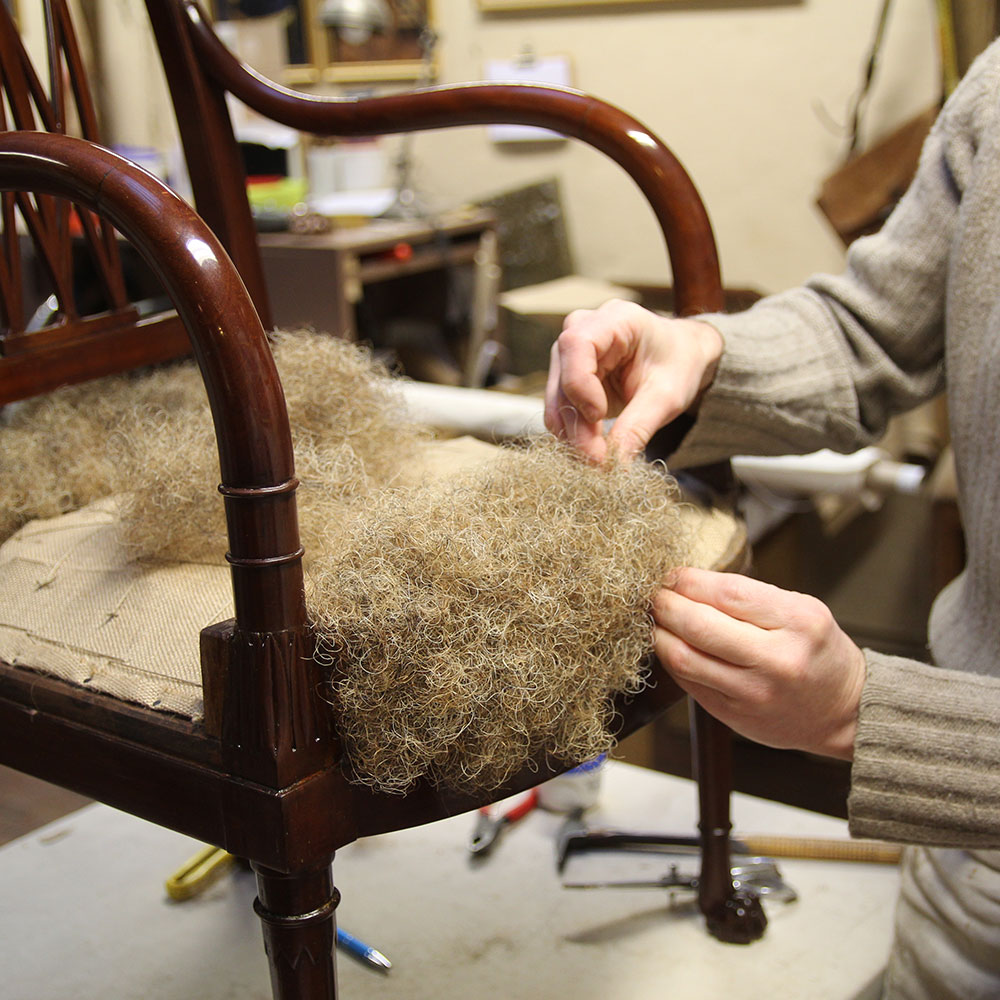Private customers
Reupholstery
Traditional know-how
Reupholstery is a fundamental stage in the restoration of a piece of furniture. Reupholstering a chair requires several steps such as attaching webbing and setting springs, stitching, stuffing, and applying fabric. Many of these steps are no longer required for modern foam seats. All these meticulous operations are done by hand and call for a lot of patience and a level of dexterity perfected over centuries of repeated motions. Unlike many other upholsterers today, Brazet still uses traditional material such as natural horsehair. The artisans of Brazet are proud to maintain all the techniques inherited from the traditional art of upholstery.

